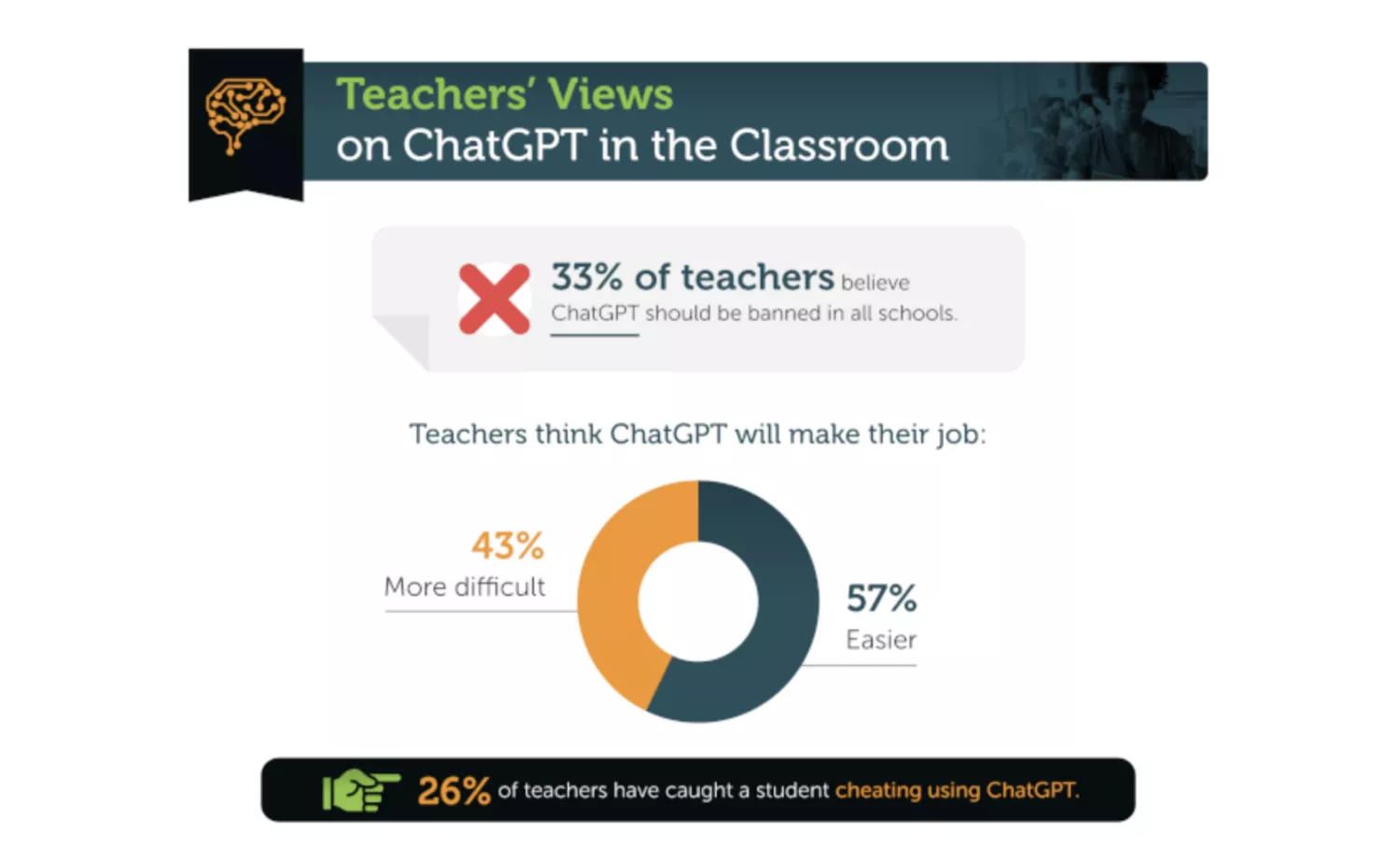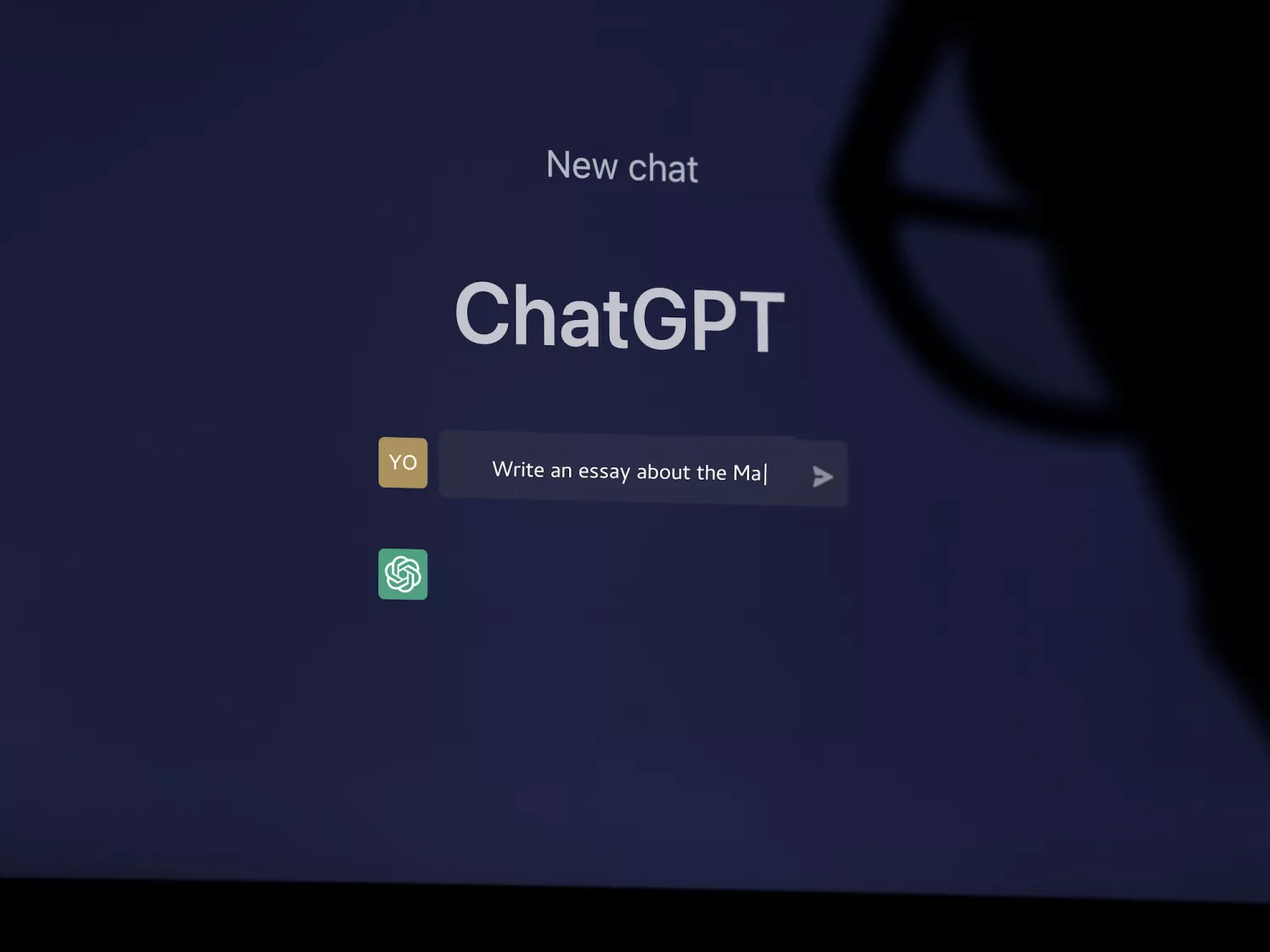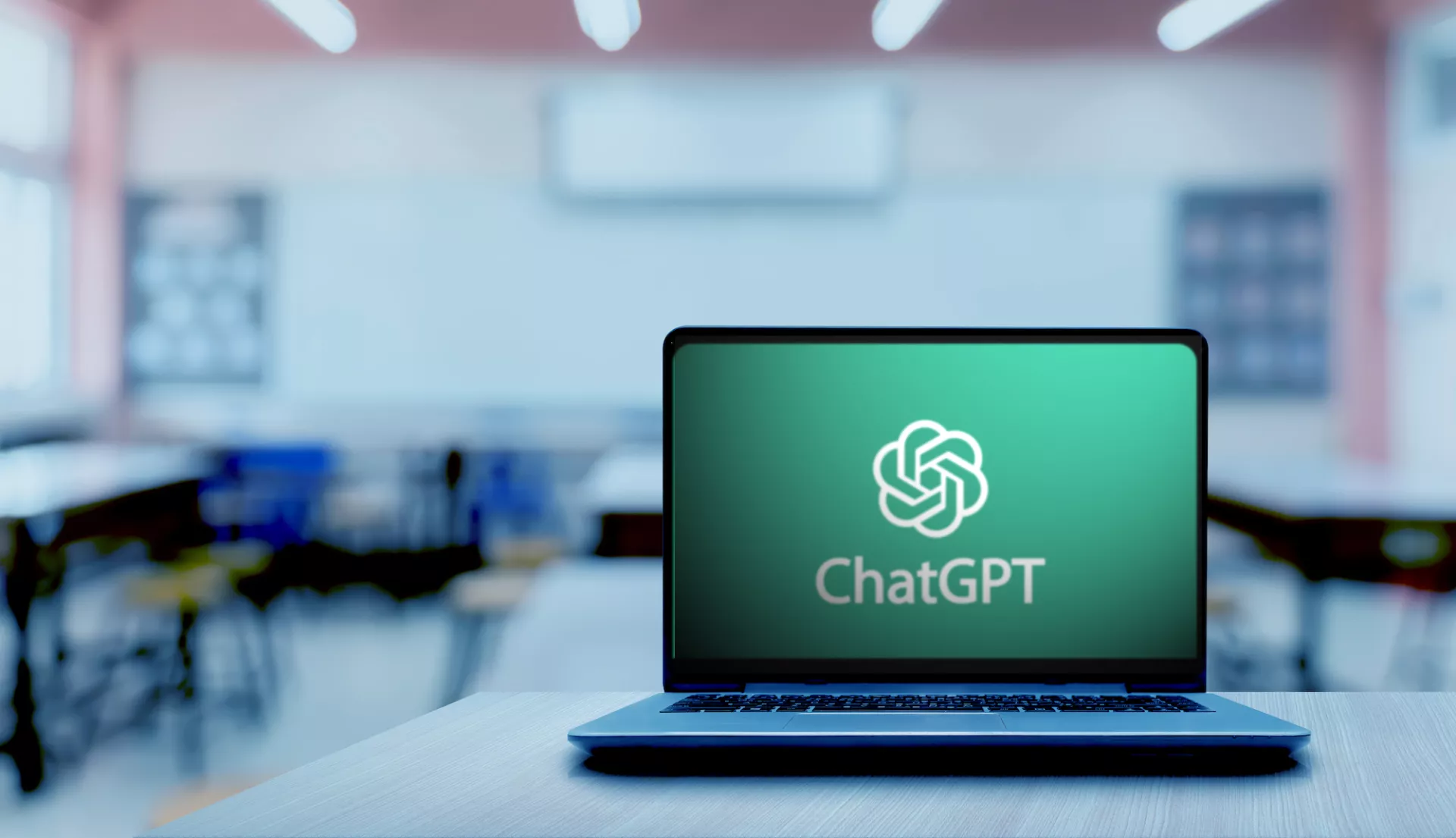Key Takeaways
- Soon after ChatGPT launched in November 2022, some large school districts, concerned about student cheating, immediately blocked access.
- ChatGPT-generated work has left many teachers spending more time checking for AI plagiarism and revamping lesson plans to be “AI-proof." According to a recent survey, about 1 in 4 teachers have caught students cheating using the chatbot.
- Some educators believe the benefits outweigh the risks and have embraced ChatGPT in their classrooms.
In November 2022, OpenAI, an artificial intelligence (AI) research laboratory, launched ChatGPT, a transformative AI program. Since then, ChatGPT and its impacts on education have been the center of heated debate.
A recent survey conducted by Study.com, an online learning platform, shows that 43 percent of educators feel the program will make their jobs more difficult. The others, nearly six in 10 teachers, predict it will make their lives easier.
On the one hand, many educators fear the program threatens academic integrity, encouraging new methods of cheating and plagiarism. Because of the program’s simplicity, accessibility, and convenience, students have been using it to generate answers to homework and even entire essays, claiming the chatbot’s writing as their own.
On the other, ChatGPT’s simple design and brainstorming capabilities appeal to educators who see its potential to improve education. These teachers say that, over time, the real impact will not be an increase in cheating, but a revitalization of lesson plans and classroom instruction.
“I would say go for it,” says Cherie Shields, a high school English teacher in Sandy, Oregon. “The best way to learn anything new is just to jump right in and try it out.”
How ChatGPT Works
The website’s design concept is simple. First, users create an account and log on. Then, they generate a new chat by typing a prompt or instructions into the chat bar. Within seconds, the chatbot generates bodies of text in response. Users then have the ability to instruct ChatGPT to edit, adjust, or regenerate a response.
The technology is trained to formulate conversational responses based on information it has encountered, using a database to compile, paraphrase and summarize information.

ChatGPT In the Classroom
Within two months of the program’s launch, 51 percent of K-12 teachers reported using ChatGPT, according to a recent survey by the Walton Family Foundation. Forty percent said they used it at least once a week; 53 percent anticipated increased use this year.
Shields is one of those teachers. Recently Shields asked ChatGPT to generate ten different project options for her sci-fi unit. Instead of a traditional essay assignment, the program suggested imaginative projects such as creating and explaining a poster of an alien.
ChatGPT also has the ability to translate assignments into a student’s native language or simplify materials for new language learners. The process is as simple as typing specific instructions into the chat bar. For example, educators could prompt ChatGPT to “translate this reading into Arabic.”
“With Chat, you can translate all of the supplementary materials into [students'] native language, which makes it far easier for them to complete their assignments,” says Shields.

The chatbot also can rewrite responses at different reading levels. Shields explains that she sent tenth-grade assignments to ChatGPT, asking the chatbot to restructure the material at a sixth-grade level. Her students were then able to follow along and participate in class with their differentiated material.
“It’s really easy now to make different types of assignments,” says Shields.
Similarly, Kim Lepre, a seventh-grade English teacher in California, explains that when used correctly, ChatGPT can simplify and improve educators’ everyday lives. Lepre uses the program to differentiate instruction, generate quizzes and even email parents, saving more time to interact with students.
Through ChatGPT, Lepre created a new lesson for a unit about the Salem Witch Trials. The program helped her generate an article for her seventh-grade students, plus ten variations of a multiple-choice quiz.
“It has just taken a load off of the little minute things that I have to do so that I can just focus on teaching the kids,” says Lepre.
Meanwhile, Donnie Piercey, a fifth-grade teacher in Kentucky, told the Associated Press (AP) that he recently used ChatGPT during a lesson about playwriting, or “Pl-ai Writing.”
Students came up with characters and a problem to be solved throughout the plot of a short play. Then Piercey submitted those student ideas to the chatbot, instructing it to generate play scripts set in a fifth-grade classroom and to develop surprise endings. ChatGPT generated play scripts which students edited, rehearsed and performed.
Causes for Concern
If ChatGPT is the future, many educators fear how it will affect their classroom.
As the ChatGPT website explains, ChatGPT occasionally generates misinformation, untimely and biased responses. The program is only as knowledgeable as the information it has been introduced to and trained with. Even creators acknowledge that the program is not a credible source of factual information and should not be treated as an academic source. Many teachers worry that ChatGPT will make teaching and learning—particularly writing assignments— more formulaic.
“I think ChatGPT is a crutch that will prevent students from actually needing to learn content. Although I can see its use for small tasks, like how to email a teacher with questions, it also prevents students from developing the soft skills that completing those small tasks allows.” — K-12 teacher surveyed by Study.com
The biggest concern is cheating. More than one-fourth of teachers have caught students using the chatbot to cheat, the Study.com survey found. An influx of ChatGPT generated work has left many educators spending more time checking for AI plagiarism and revamping lesson plans to be “AI-proof”.
Until the risks to academic integrity and educational quality can be properly understood and evaluated, many large school districts, including Baltimore, Los Angeles, New York City, and Seattle, have banned ChatGPT.
Combatting Cheating
In January, OpenAI recognized the potential for problematic use of ChatGPT in the classroom. The company introduced an AI text classifier as a tool to help determine whether a piece of writing was created using AI technology.
Similar technology, such as GPTZero and CopyLeaks AI Content Detector, already has been launched—with many more detection programs in the making. These programs are accessible and readily available.
“As educators, we haven’t figured out the best way to use artificial intelligence yet,” Donnie Piercey told AP. “But it’s coming, whether we want it to or not.”
While Piercey’s fifth-grade classroom may be less susceptible to AI plagiarism, Shields’ high school courses have already been generating and turning in AI generated work.

“We've already had a number of students turn AI-generated essays in and they're so easy to spot,” says Shields. “It's flawless. Not a single grammatical error. All the sentences are perfect. And when you're working with students of that age, you know that they don't write flawlessly like that.”
If the chatbot is asked to write an essay about a book, it often misquotes the reading, only provides partial quotes or even inserts quotations that do not align with the theme of the essay.
“Most students don’t even know that they are incorrect or inaccurate, and that’s another way to check to see if they are using AI,” says Shields. “None of the quotes make sense.”
Shields suggests students evaluate information generated by ChatGPT. Addressing the validity of an AI-generated report will build skills in editing and fact-checking. She also believes teachers should reimagine their assignments.
“My thoughts are we need to kind of move away from the standard five-paragraph essay response and we need to do something a lot more imaginative to get our students to respond,” says Shields, explaining that prompts that require personal narratives and critical reasoning would render AI unhelpful to students.
Lepre explains the possibility of instructing students to reverse engineer an essay generated by AI by personalizing the essay and adding missing details. She also suggests discussing how the generated content compares to an essay written by a human author.
“I think we should teach them how to use this tool,” says Lepre. “It’s kind of like handing a kid a calculator… Hand them a TI85 – that’s one thing, but show them how to use it? That’s even more powerful.”


